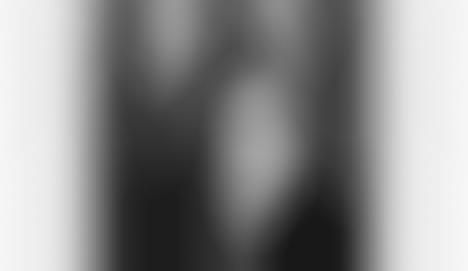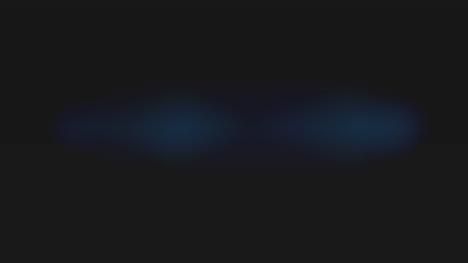Anchoring in the Future
Frank Spencer, Founder, Creative Director, and Principal at Kedge
 Working at Kedge — a foresight, innovation, and strategic design consultancy — Frank Spencer helps clients to map the future for short and long-term success. He spoke with Trend Hunter about seeing risks and opportunities on the horizon, and breaking the stigmas of being a futurist.
Working at Kedge — a foresight, innovation, and strategic design consultancy — Frank Spencer helps clients to map the future for short and long-term success. He spoke with Trend Hunter about seeing risks and opportunities on the horizon, and breaking the stigmas of being a futurist.TH: Tell us about yourself.
FS: I’m the Founder, Owner, and Principal at Kedge, and I also operate in the role of Creative Director. That means I oversee everything we create in terms of tools, scenarios, and custom engagements, but in reality our whole team is creative, and it’s our collaborative team and culture that makes Kedge an amazing place to work.
I’ve been foresight professional for the better part of two decades, and I have a master's degree in Strategic Foresight. Having both the academic and professional background has helped me to translate the technical side of foresight into practical tools and actions for our clients. Many of my colleagues and associates might not call themselves "foresight professionals" or "futurists" because it might not go over so well with people, but it seems to be more excepted now than ever before - it used to be that if you called yourself a "futurist" you got rotten tomatoes thrown at you and you were kicked out of the village. Now, people love to call themselves futurists, and lots of organizations have a resident futurist or a foresight division, so we’re happy to see that.
We might be called strategists, or innovation experts, or really whatever the situation demands because foresight applies to almost any organizational or social need. For this reason, I’ve worked with all kinds of companies all over the world, from Fortune 100s to social entrepreneurs, and everything in-between. One such company that Kedge has had the opportunity to work with is the Walt Disney Company. We’re very proud of the work we’ve been able to do with them over the past five years, and during that time we’ve been their primary partner in building a culture of foresight across the organization. Specifically with Walt Disney International, we helped them create a global futures team, which they never had before. We’ve now trained over 500 of their leaders and employees in more than 40 countries around the world to be futurists and use that skillset to develop transformational strategy, innovation and talent within the company. Actually, about six months ago they elevated foresight to be one of the top three leadership competencies in the company. Pretty cool stuff.
How do you and your team generate great ideas? Do you have certain rituals to make creativity happen?
Well, I hate the old phrase, "Do we eat our own dog food?" But people probably wonder how often we actually use the tools and methods that we offer to our clients to create the future of Kedge? The answer is, we do. For starters, we spend a good portion of our day doing environmental and horizon scanning. The first thing I do when I wake up every morning is look across social, environmental, technological and economic drivers in the news, in journals, and in the various sources that I’ve customized for myself over twenty years to make sure that I have a robust idea of what’s going on in the world.
But it doesn’t stop there, because as foresight professionals we want to look far beyond the obvious trends, drivers and signals. One of the things that’s very important to us is to make sure that, when we do horizon scanning, we’re not just looking at events that are taking place or looking only on the surface. Everybody can do that. Anybody can look at a top 10 trend list in a magazine and say “Well, I’ve done my work. I’ve read the trend list in technology or fashion magazine, so I’m all set.” Actually, it’s what happens before and after the trend that’s really most important. Before the trend manifests, there are shifts in values, and as a result of the trend there are multiple implications and impacts. So in foresight those are the things that we’re most concerned about, because they tell organizations what’s coming and what possibilities exist that we must act on.
The value shifts in society tell us about more than the trend that is right in front of our face. They also tell us what else might evolve or how change will migrate across industries. A lot of times a company will focus on a certain trend, and another company in a different industry will focus on a different trend, and they don’t see how those trends relate to one another. But when they see the underlying value shifts that are happening, they gain the insight around how trends they weren’t paying attention to can impact them in ways they had not previously imagined.
One of the things we do to stay creative is to build provocative maps of the future based on the emerging value shifts, implications and impacts of today’s trends. We do that through a variety of methodologies and brainstorming tools, and we’re constantly doing that in the office as well as with clients. Thinking provocatively helps us to see the world in ways that might be outside of our comfort zone, but it’s critical to good foresight work.
What are some barriers to innovation? How do you get around them?
The biggest barrier is that people just don’t think about the future enough. Today, innovation has mostly come to mean incrementalism. We’re in a volatile and complex environment, but we still think of innovation as "How can I make the screen one inch bigger?" or "Next quarter it’s going to be in blue. Isn’t that amazing?" Companies call that innovation. That’s not innovation, that’s incrementalism. True innovation, at its foundation is transformational. Oftentimes when we are working with companies, we’ll start with the word "innovation," but over time we teach them a new phrase - "transformative invention." And in today’s volatile landscape, that’s really the way you need to be thinking. Usually, when they’re doing foresight or trend work, companies think “Those transformational ideas are on the horizon, I have plenty of time to get ready for them." That’s one way to look at it. But more importantly we can look out into the future and pull possibilities and opportunities back to the present. That’s how our innovation efforts become future-empowered. We say this at Kedge all the time: it’s like going to the future and hot-wiring a car and then bringing it back to today. So the biggest barrier to innovation is this short-term thinking that we have - we don’t see futures thinking as being related to the things we want to build now. In reality, the way we think about the future directly impacts the actions we take today.
And then the other barrier is complexity. I’m sort of a complexity science nerd, and that’s good because it’s super important in our work. Complexity as it’s usually presented in business or strategy or innovation magazines is seen as something that we have to stomp out or kill in favor of simplification - and that old way of thinking will not work in this new environment of constant change. Complexity is actually the natural order of the universe: babies grow up and become more complex; when you look through a telescope into the vastness of space, things don’t get more simple, they get more complex. Complexity is a sign that things are maturing; it means that growth is taking place. Our problem is that we’ve confused complexity with complication, and that’s something we do to ourselves when we don’t understand the new pathways and processes required in a new operating environment. We try to do things the way they’ve always been done, and that creates a mess. So the way to succeed isn’t to attempt to kill complexity, it’s to learn how to leverage it.
How do you identify trends? What resources do you and your team use to spot trends and insights?
I know today that people are excited about things like software for trend hunting, those are perfectly fine and needed, but the important element is the qualitative aspect of environmental scanning. Quantitative is necessary, but we don’t really train ourselves very well to be qualitative thinkers. So, the way that we look for trends is really through pattern recognition and sense-making. What that means for us is that we’re not just looking for the trends we’ve spotted right now, but we want to be able to see the second horizon trends, what will emerge next. We want to scout in that place. At Kedge we use a tool we created called ‘Qualitative Predictive Analysis’ (QPA) It sounds a bit like "jumbo shrimp,” like an oxymoron, but it’s a fantastic tool that embeds value-finding, sense-making, pattern-making, and even a little bit of data if it’s available. Remember, there’s little to no data on those things that are just emerging on the horizon, but that certainly doesn’t mean that we can’t legitimately scan for them. QPA allows us to move through a set of cascading breakpoints to second and third order landscapes of change. It starts quantitatively, but it ends qualitatively, and that a good thing, because new environments demand new ways of measuring.
Do you have rituals for resetting to be creative?
One of the ways that I personally reset is by reading tons of science fiction. I’m a big sci-fi fan, and I’ve been so happy to see that over the several years people have been suggesting companies should use more sci-fi. Leaders have been saying, "We need to get a sci-fi writer in our company! NASA uses sci-fi writers." And I’m thinking, "Yeah! I’ve been saying that for a long time.” (laughs) So I’m super excited to see that companies are doing that. Sci-fi as a genre is unique in that most writers take their time to study what’s going on today in technologies such as 3D printing and neuroscience and robotics, but also the way society evolves and how things can work differently. It’s not just fantasy - which is a great genre as well - but whether it’s near-term and long-term sci-fi, it’s really based on something that’s happening today and the various ways those things might play out. That’s one of the ways that I constantly reset, not just between projects but on a daily basis. It helps me when I go to the scenario-writing process, which are robust narratives for companies that need to be a lot more grounded than a sci-fi novel. But even those are a form of sci-fi, and especially when they stretch us to think about the future in ways that are different from our subconscious biases and assumptions.
Has there ever been an instance where another industry has influenced an innovation at your company?
The one that stands out the most with me was when we were working with an automotive company. They were the first to create the self-driving semi truck. So they’d done tons of testing with it, many hours on the road. The guys we were working with had done work on self-driving vehicles and a little drone technology as well, but they’d never considered how the value shifts would impact the larger ecosystem. They were thinking just about technology, and a little bit about the drivers. But they didn’t think about all this other stuff that was going to need to happen while the driving was going on. What are the drivers going to do while the truck is driving itself? What are we going to need to offer the public if we no longer offer X, Y, and Z as a manufacturing and shipping company? So they came out of our session thinking, "We’re going to need to be not only an automotive company but also an entertainment company." And we’d had the pleasure of working with several different entertainment companies, Disney being one, so we had a lot of expertise in that area. We helped them think about virtual reality, augmented reality, and different kinds of entertainment technology that are going to be needed inside their vehicles.
This is happening everywhere, and this is why the word "industry" needs air quotes. If you see automotive companies getting into entertainment, and you see entertainment companies getting into machine learning, and you see computing companies getting into automotive, what does the word “industry” actually mean anymore?
What are some examples of things you can do to create a culture of innovation?
One of the best ways to explain this is the name of our firm, Kedge. A kedge is a smaller anchor on a sailing vessel. The large anchor, everybody knows what that does, but the smaller anchor is quite different. When there is no wind at sea, the sails won’t help you, and you can’t move forward. So you take the kedge, which was tied to a long rope, and put it in a rowboat. Then you row out in the direction you want the ship to go and drop the kedge, and then everybody who remains on the ship pulls themselves to where they want to be. Literally, a kedge is a way to pull yourself to your aspirational future, and that what we empower organizations to do.
References: kedgefutures
Featured Articles

Combating Complacency and Staying Inspired
Bethany Halbreich, Innovation Consultant at PepsiCo

Sparking Unexpected Ideas
Senior Art Director at Geometry Global, Veselina Angelova

Cultivating Innovative Employees
Colleen Mendez, Director of Research at FremantleMedia

Purchasing Behavior in Identifying Trends
Director of Strategy at Geometry Global, Mafe VillasBoas

Connections that Spur Innovation
Ed Matesevac, Innovation Analyst at State Farm

Putting Consumers First
Kassie Deng, Katherine Rossi, Dan Grappone and Heriberto Salcedo of Viacom

Innovation Through Devotion
Robert Fields, Lead Innovation and Insight Engineer at Kenwood

Creative Long-Term Thinking
Amy Majerowski, Innovation Strategist at ampl!fy insights + innovation

Inspiration Comes from Everywhere
Antonette Bivona, Director of Global Marketing at Almay